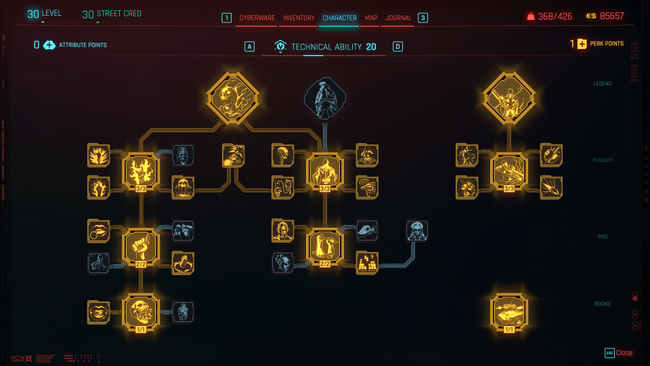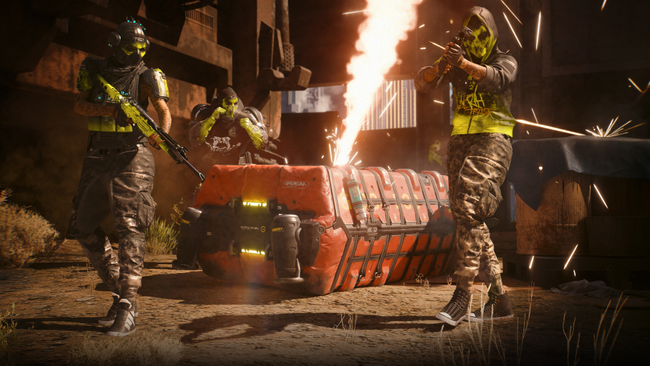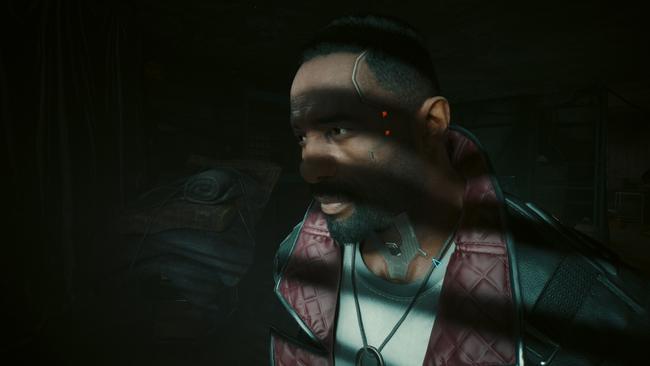Cyberpunk 2077: Phantom Liberty Review
Now, full disclosure - I’m one of those people who always thought that Cyberpunk 2077 was bloody good. But, I admit, I was also playing it on a mega-spec PC and suffered next to none of the problems that plagued players on the last-generation consoles. Let's not mince words: the way Cyberpunk launched on those machines was unacceptable; it shouldn’t have launched on those machines at all.
You don’t get a second chance at a first impression, of course - but I do believe in second chances more generally. CD Projekt has really tried to earn one of those over the two years since Cyberpunk 2077’s troubled launch, with a string of patches offering everything from bug fixes and balance tweaks to full-blown additions to the game.
Having left the last-generation versions behind back in version 1.6, the developers have now been free to harness the power of the newer machines in an attempt to deliver a more complete version of Cyberpunk. That all culminates this week and next - first with the release of Cyberpunk 2077’s ‘2.0’ release, a major patch that overhauls the very heart of the game, and then with Phantom Liberty, a full-fat, hefty-sized expansion packed with new content. The first of these releases is free for all and the second is not, but I’m here to report that all of it is pretty damn good.
I think, in honesty, you’ll be best served if you take these two updates as one overall package. While Phantom Liberty can be booted alone, it’s rooted into the main story. Going straight to Phantom Liberty simply skips you through certain elements of Cyberpunk 2077 and drops you into Night City at the point that the expansion unlocks with some choices pre-made for you. Alternatively, you can simply boot an old save and pick up the quest that way - or best of all, embrace the concept of a fresh start for the game and boot an all-new save file. That’s what I ended up doing.

So, what do you get? Well, Version 2.0 is a total overhaul. CD Projekt RED is no massive stranger to this - it ripped major systems out of The Witcher 3 and rebuilt them in the same way - but this is a much more transformative offering. At the heart of the shift is a retooled Perks and Skills system, with the entire RPG progression system of the game now more or less unrecognizable from what launched in 2020.
The paradigm between perks and Cyberware, the cybernetic body modification aspect of the universe, has shifted entirely. Clothes are now purely cosmetic, for instance, with armor governed by skin-strengthening implants installed at Ripperdocs. How much Cyberware you can install, meanwhile, is limited by your Perks and Level - and tops out far, far higher than in the original game, resulting in crazier builds with much more varied and specific skills.
With Phantom Liberty also installed, that mysterious extra empty slot on the skill tree finally fills in, offering the ‘Relic’ Skills - a separate area, with its own currency, that unlocks even more advanced and deliciously powerful options to your arsenal. This skill tree is truncated compared to the others, but it makes up for it by mostly being about interacting back with abilities from the other trees - enhancing them, and allowing you to become a real specialist in something like the Monowire.
For all these changes, Cyberpunk 2077 is a vastly better RPG as a result. I felt more ownership over my V than I ever have - and thanks to an ease of access to respec, I was free to experiment and find a play-style that bought me the most glee (in my case, an incredible hacker who fries brains from afar before dashing in to mop up the remnants with super-speed and a samurai sword). Even simple stuff, like taking clothing out of the stats equation, ups the role-playing value - my V now dresses for fashion sense rather than stats.

To use all of these new abilities, you need a challenge, of course. The missions of regular Cyberpunk 2077 are largely untouched, though there are newly-patched wrinkles to deal with along the way. The threadbare police system that was widely mocked back in 2020 has been replaced with more what you’d expect - police now respond with more intensity the higher your wanted level, and engage in police chases and the like. Car combat is actually a broader addition to the game in general, too - you can now shoot-and-drive at the same time, or even mount some weapons to vehicles for Fury Road style shenanigans.
Over in Phantom Liberty, however, new and old mechanics are given the chance to shine. Years on, CD Projekt RED now understands what it has in Cyberpunk 2077. It knows the game better than it did at launch. And so the expansion is that most glorious of things: a game confidently leaning into its strengths - and sometimes delighting in subverting expectations with that knowledge.
What I’m saying is, the mission design of Phantom Liberty is pretty well sublime. It’s Cyberpunk 2077 at its best. The original game has loads of amazing moments - the heist, joining the Aldecados, that solo assault ending path, the funeral, the serial killer… but, these moments were the glorious exclamation marks that punctuated a good but also pretty standard and as-expected open-world experience. Phantom Liberty, however, is just the hits. All the time.
The main story of Phantom Liberty is excellent, full of teases, twists, and droplets of lore that make you reconsider even some of the Cyberpunk universe proper as well as Dogtown, the expansion’s setting - but even the side missions within Dogtown are something special. Every one is a designer seemingly looking back on the sprawling content of the main game and asking, ‘how can I make the best mission of that type in the game?’ Reader, lemme tell you, most of these missions deliver. In short, even the side missions slap.
Part of what makes this work is Dogtown, the setting for much of the expansion’s action. This is a cut-off segment of Night City, lawless, a dog-eat-dog zone where the strongest survive. At the top of the pile in this city-within-a-city is Kurt Hansen, a jarhead type that rules with an iron fist. What was once a lavish and opulent new district is now a wasteland that makes the rest of Night City look clean-cut.

Initially, V has to sneak into Dogtown, loses the ability to communicate with Keanu Reeves’ Johnny Silverhand, and is on her own. For a little while, it seems like the expansion might be a stand-alone, self-enclosed story. But after some explosive on-rails action that sets up the stakes, you’re set loose. Johnny is returned to you, and you can enter and leave Dogtown as you please.
This helps to mesh the entire expansion into the rest of the story. There’s a range of new gigs, side quests, and other content available in Dogtown. Some side missions uncovered there even take you back to Night City. If a friend back in the city calls needing help, you can hit the road and get back to them, putting the expansion on pause with no loading screens, as Dogtown is part of the seamless open world. Or, alternatively, you can deliberately main-line the expansion story; the choice is yours.
Phantom Liberty’s story offers a different sort of tale to the rest of Cyberpunk. I don’t really want to spoil it - but it’s a well-reasoned change of pace. The official description of it was a spy thriller is spot-on, which offers a natural contrast to the main game’s focus on corporate and gang warfare. Here, you’ll save the President of the New United States after her jet gets shot down like Jack Bauer, infiltrate and charm your way through parties like you’re James Bond, and broker fragile alliances like you’re Jason Bourne. V begins to feel like more than a merc with a death sentence, and the stakes of the story feel significant and personal all at once - which can be difficult to accomplish.
Naturally, there’s some difficult choices along the way, including a ‘hard’ branch between two very different pathways and futures for V and Phantom Liberty’s cast. And yes, depending on certain factors of Phantom Liberty, you can unlock a new ending and a new fate for V and Johnny in the core game that… Well, let’s just say - it’s worth it.
While there’s a differentiating factor in the story, the important thing is that this all still fits with what Cyberpunk 2077 is. The flourishing but broken society that’s cradled in the shattered ruins of Dogtown is as much a commentary on this world as the rest of Night City, and it has a completely different feel while feeling absolutely in keeping with the city the main game established. Familiar faces from your Night City adventures return, including plenty of gloriously deadpan new material from Keanu - but the stars of this show are the new faces for Phantom Liberty.

From major characters like Idris Elba’s Solomon Reed to minor bit players, Phantom Liberty is full of intriguing and attractive characters that you’ll want to spend time with. It’s also full of generally excellent dialogue and performances, which are often at their best in particular when it’s leaning into the spy thriller nature of the narrative. There’s nothing quite like a truly tense conversation that feels like it could explode into violence at any moment, with each dialogue choice a risk that could ripple back through the rest of the story.
All of this is a lot to basically say: I think that Phantom Liberty might be one of the best expansions I have ever played. Certainly, it’s up there with The Witcher 3’s Blood and Wine, which was also one of the best. That makes it worthy of a top score in itself - but when paired with Cyberpunk’s incredible overhaul - it’s a comeback for the ages.
Cyberpunk 2077 was, like I said, always good. I’d go so far as to argue it was great, in fact - so long as you had the machine to make it work. There never should’ve been a PS4 or Xbox One version. That’s the truth. But in some ways, the humiliation of that botched launch might’ve been one of the best possible outcomes. It has clearly made CD Projekt RED rethink and refocus. It set a fire in the belly of its developers and made them spend the two years not just building an attractive add-on, but also bolstering the original game to be the best it can be.
With Cyberpunk 2077 version 2.0 and Phantom Liberty combined, the result is undeniable: this game is excellent. The original game is drastically improved, if not transformed, by the combination of the free 2.0 and paid Phantom Liberty additions. Meanwhile, Phantom Liberty itself is an all-time great expansion, taking all of the best elements of Cyberpunk 2077 and cranking them all up to eleven into an excellent stand-alone narrative in its own right. If Cyberpunk 2077 had released in this state, it might’ve been lauded as an instant classic, an all-time great - but the fact that this has arrived two years late shouldn’t detract too much from the strength of the experience.